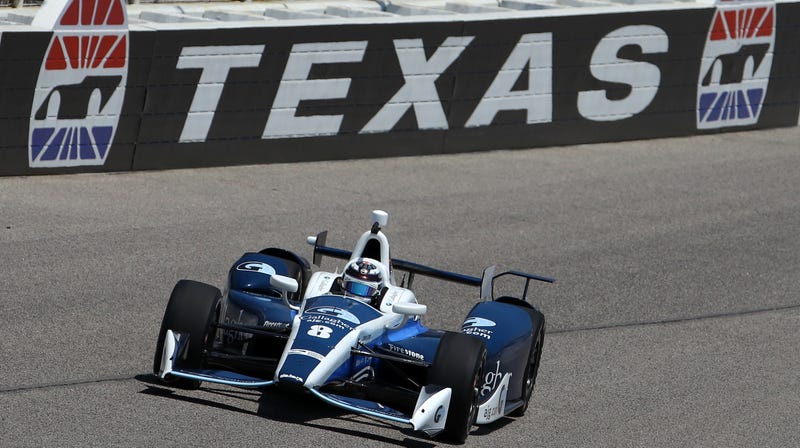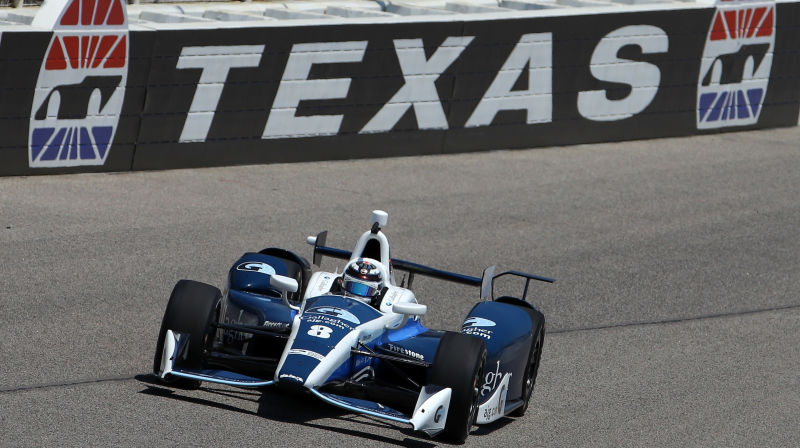
On the cusp of IndyCar’s second oval race of the season at Texas Motor Speedway, Carlin driver Max Chilton has stepped down. He’s not retiring, not yet—but he’s just not comfortable competing in the last four oval races of the 2019 season.
Buried in the press release announcing Conor Daly as Carlin’s driver this weekend is Max’s confession as to why he’s opted out of ovals in favor of solely road and street courses:
I would like to thank [my sponsor] Gallagher for being supportive of my decision to not compete in the remaining oval races this season – I am extremely fortunate to have such a supportive partner. Risk Management is a central consideration of both Gallagher and myself in how we operate.
I’m excited and pleased by the outstanding proactive work being done by INDYCAR around driver safety and the innovation of the solution developed in partnership with Red Bull Advanced Technologies that has created a new aero screen. The innovative solution will be the most advanced single seater driver head protection in the world and will be introduced in 2020.
The key phrase there is “risk management”—a business term usually reserved for the prediction and evaluation of financial risks to strategize a way to cushion their impact. In IndyCar terms, it means strategically avoiding situations known to be more dangerous than others. In a word: ovals.
While the focus will always be on what driver is racing the car when it comes to motorsport, arguably the bigger story here can be found written in between the lines. A driver is stepping away from a full-time seat because he doesn’t think racing on ovals is worth the risk to his health and safety.
When looking at cold, hard facts, it’s difficult to disagree with Max’s reasoning. Since the beginning of IndyCar’s history (including the American Automobile Association, United States Auto Club, Championship Auto Racing Teams, and the Indy Racing League), four deaths have taken place on a street or road course, according to Motorsport Memorial. But 91 have taken place on ovals.
Advertisement
In the past 20 years, since 1999, there have been six deaths. One was on a road course. The other five were on ovals.
At the 2019 Indy 500, average race speed was 175.794 mph, while the qualifying was 229.992 mph. Twenty years ago, average race speed was 153.176 mph and qualifying was 225.179 mph. The speeds have plateaued in recent years, but racing facilities haven’t always been maintained the way they should have—think about Pocono’s fencing, brought to light only after Wickens’ accident.
At Texas Motor Speedway in the early 2000s, drivers were passing out in their cars due to the sheer G forces their bodies were pulling—to the point where the race was cancelled in 2001. It wasn’t until the implementation of the Hanford Device, which was a a flat vertical plane added to the back of the rear wings designed to increase drag, that cars were able to return.
Advertisement
The danger has always been there—most of the time, we’ve simply opted to ignore it until we couldn’t anymore.
The most recent death—Justin Wilson’s at Pocono in 2015—saw a widespread media backlash. IndyCar should be shut down, Business Insider reported. Turnology called for the removal of ovals from the calendar. Another wave of criticism followed Robert Wickens’ life-altering crash at Pocono in 2018, and I chimed in that IndyCar desperately needed to do something to protect their drivers’ lives and wellbeing here on Jalopnik.
Max Chilton is a former Formula One driver who pivoted to IndyCar in 2016. When compared to its American open-wheel counterpart, F1 has been relatively safe. Chilton’s teammate Jules Bianchi died in a freak accident in 2015—but before him, the last death during a race weekend was Ayrton Senna in 1994.
Advertisement
Senna’s death marked the end of an era in F1, where fans finally put their foot down and said “no more.” While the death-heavy 1970s are an oft-romanticized era, it wasn’t until fans around the world could tune into the race on TV—to actually see their drivers dying before their eyes—that F1 realized they needed to make sweeping safety changes if they were going to keep a fanbase broken at the thought of losing their hero.
IndyCar has not followed suit.
While IndyCar teams occasionally have dedicated drivers for ovals and others for road/street courses, it’s incredibly rare to see a full-time driver step away from part of the season in the name of safety. Before Chilton, only driver Mike Conway was able to announce his withdrawal from oval racing, citing that he just wasn’t comfortable with them anymore.
Advertisement
And it’s understandable why. In the wake of Senna’s death, F1 made significant safety changes to ensure a similar situation would not happen again. After Bianchi’s death, F1 introduced the halo, designed to protect drivers from the kind of injuries Bianchi suffered. A similar level of rapid, widespread safety improvements have not been made—at least not as quickly—in IndyCar.
In 2020, IndyCar will introduce the aeroscreen that Chilton mentions above. But until then, the risk of racing has not seemed worthwhile.
The media is focusing on Conor Daly—which is, unfortunately, also part of the problem. Daly has been out of a full-time IndyCar drive for two years; he isn’t at fault for accepting the open seat this weekend at Texas Motor Speedway. But the joy at seeing a beloved American driver back behind the wheel has blinded many media outlets and fans to the reason why that seat became available in the first place.
Advertisement
As long as there are drivers willing to take the place of those who step down for their own safety, the narrative can easily follow the positives of the situation—namely, the drivers who are now able to race again. It’s good that Daly is able to race, yes. But it’s less likely that IndyCar will be held accountable for enabling situations that cause their drivers to withdraw out of fear for their lives—and that’s the big issue we, as a motorsport community, need to be focusing on.
Racing is not fixed. Ovals still aren’t safe. Drivers shouldn’t have to sacrifice safety for opportunity. And it’s time IndyCar starts directly addressing those concerns.
I have reached out to Max Chilton and Carlin Racing and will update this blog when we hear back.















